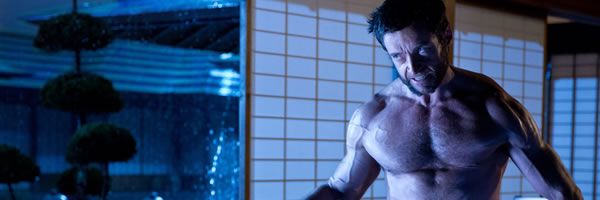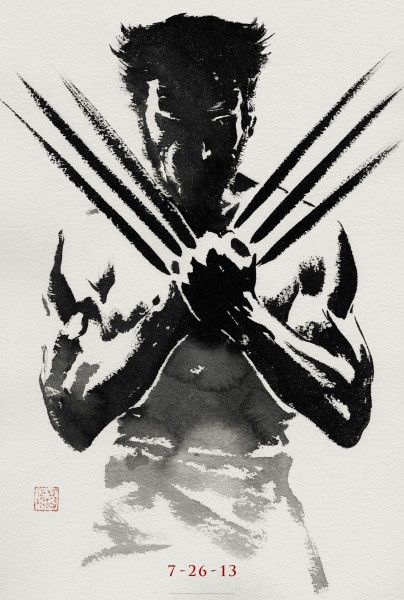In superhero movies, great power comes with the great responsibility of at least saving a major city, and even that’s considered slacking. The entire world should be at stake. But what if it were just one man? What if the superhero had to save himself and maybe one other person? James Mangold’s The Wolverine provides a refreshing take on the superhero genre by giving itself over to a character-driven approach. Wolverine/Logan is one of the most well-known and beloved superheroes of all-time, and so rather than drag him through another story where he has to team up with other mutants to stop a supervillain, his latest adventure mostly goes small scale and asks if our hero is a man who’s an animal or an animal posing as a man. But by pushing back against the tide of louder, grandiose superhero movies, The Wolverine strikes an awkward, albeit still enjoyable tone, when it has to play by the rules of the genre and throw big comic book moments into the intimate tale of a loner trying to find himself in a foreign land.
Following the events of X-Men: The Last Stand, Logan/Wolverine (Hugh Jackman) is racked with guilt over being forced to kill the woman he loved, Jean Grey (Famke Janssen). He’s resolved to put away his claws, and live in the wilderness. His self-imposed exile is interrupted when the dying Yashida (Hal Yamanouchi), a man Logan saved during World War II, wants to say good-bye to his savior in person. Reluctantly, Logan travels to Japan to honor the old man’s request, but falls into a web of intrigue when his healing power is stolen from him by the scientist/mutant Viper (Svetlana Khodchenkova), and he must protect Yashida’s granddaughter, Mariko (Tao Okamoto), from shadowy forces.
The movie should be a schizophrenic mess, but manages to hold together even though Wolverine is torn between two plotlines that have little in common other than one plotline depriving him of his powers so that he can be physically vulnerable in the other. Nevertheless, these two tones veer between serious drama and cartoonish action, and the former is far more rewarding. It lets Mangold engage in imagery and atmosphere whereas the special effects driven set pieces feel like a sop to the action blockbuster superheroes must inhabit. When we see Wolverine in World War II, he’s a P.O.W. and metaphorically a caged animal. That symbol representing Logan’s inner conflict—his violent, animalistic side fighting against his human desire for forgiveness and attempting to reconcile his immortality—is the more fascinating journey.
But the versatility to swing from introspective loner to action hero is one of the aspects of the character that keeps him so endearing. Sure, he’s brooding, but he’s also quick with a snide remake. He’s an outsider among outsiders, but his aloofness never feels mopey. In Japan, he’s a stranger in a strange land, but his identity fits in perfectly with a ronin—he’s a warrior with a code of honor, but no longer has a master (i.e. the X-Men). He can be an injured bodyguard on the run, but he can also bounce up and down on top of a bullet train.
Even though the two plotlines never come together in a substantive way beyond a plot device, the character, and more importantly the way Hugh Jackman plays him, is at home in both stories. We won’t know how anyone else will compare to Jackman until another actor picks up the claws, but he has undeniably defined the role on-screen. He is the Wolverine against which all other Wolverines will be judged, not just because he had the role first or the longest, but because he inhabited it so completely. Even in the absolute clusterfuck of X-Men Origins: Wolverine, Jackman never lost sight of the character, and he always has an awareness of how to make the story come to him rather than chase the whims of the plot. In The Wolverine, he provides some levity to the drama finding his humanity while protecting Mariko, and in the goofy comic book scenes he plays it completely straight.
However, despite the strength of Jackman’s performance, those action scenes still make the movie an uneven and slightly less rewarding experience. The movie admirably takes its time to build up to the first set piece, but when it gets there, it’s a cacophony of slicing and gunshots. Somehow, the action becomes more cogent once they get on top of a speeding bullet train rather than fighting on the ground. But the film has still made a jarring transition from character piece to its hero ducking and jumping over street signs like he’s in a video game. Fighting a giant robot and a woman who can shed her skin is still entertaining, but it also feels much sillier when not too long ago our hero was previously coming to grips with his identity.
Thankfully, no matter how far the film goes to embrace its more cartoonish aspects, it’s still all about Wolverine as a character rather than part of a set piece. His popularity is obviously due in part to his superpowers, but we’ve reached the point in movies where we’re seeing superpowers all the time. Furthermore, blockbuster heroics have become so abstract that we’re debating how many innocent citizens have died so the superhero can save the day. The Wolverine isn’t intended as a repudiation of other superhero movies, but it’s still a welcome celebration of the man who is the best at what he does even if it doesn’t involve saving the world.
Rating: B


